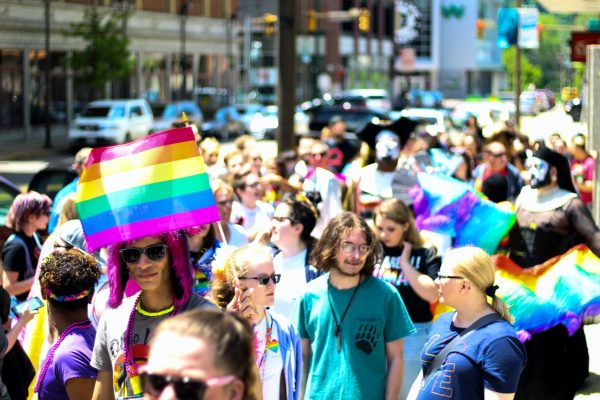So yesterday I read Discord Comics for the first time. For those who are new to the scene or simply lived under a very sheltered rock growing up, like myself, Discord Comics was an anthology of LGBTQIA+ stories (back when it was still called LGBT; QIA+’s, please forgive the site’s outdated terms, but hey, pretty sure Murfs is demi, so not underrepresented, I suppose.) The stories themselves are separate only in that each is in a different character’s point of view, but this is important, even for stories like Steve and Mark’s which are intertwined almost inseparably. The comic is a little outdated (by about 8 years) but discusses the hardships faced by LGBTQIA+ at that time, some of which are a little more common and less difficult in this age, like coming out, and others which, depending on where you live, are still a major problem to this day, like bullying, both verbal and physical, transphobia, homophobia, the”gay panic clause,” and the hardships of transition. The art style is detailed and pleasant to the eye, and in Jamie’s Story takes a dark, surrealistic approach, describing almost perfectly what it’s like to have severe PTSD.
The comic’s approach on coming out is positive, encouraging readers who are queer or trans* to come out and be open; it asks readers to question things that at the time were ignored or accepted. Jamie’s story centers on that more than any other’s, as his story isn’t one of accepting who he is, but accepting those around him. (As you can see, today I’m focusing on him.)
Jamie’s story begins drowning in surreal and expressionist artwork as the author attempts to convey what the world looked like to the character growing up. It is a far cry from the very natural figures and movement of the previous stories and made me wonder at first if Jamie suffered from a mental illness such as schizophrenia (as the surrealist art carries on into the telling of his adulthood). However, later into the comic, if it wasn’t clear already, it becomes safe to say that he suffers from PTSD, Post Traumatic Stress Disorder.
When Jamie was a child, his father was always working and his mom was a very particular, very religious woman. He was molested and raped for years by a young adult neighbor.
He’s pretty much an asshole through the majority of the books, and while this would explain why, the story, being narrated by the character, informs the reader the entire time. “This doesn’t explain/excuse why I’m an asshole. I’m an asshole because I choose to be.” By the end of the comic, he has fallen in love with a transwoman and accepts her as a woman, but breaks up with her so that he can seek counseling for his childhood trauma. He encourages her to see other people because he just wants to see her happy.
Is this tale of reformed homophobia just wishful thinking? I don’t think so. People can change so long as they want to change. Jamie, however fictional, had a day that made him question everything and questioning, whether fiction or reality, is the first step to discovery and acceptance. Whether you are more like Jamie or more like Murfs, I encourage you to question the things around you, not just introspectively but voice your questions. Just, you know, word them kindly if you don’t want to offend or distance yourself from that you’re questioning. Keep your mind curious and your heart open.






